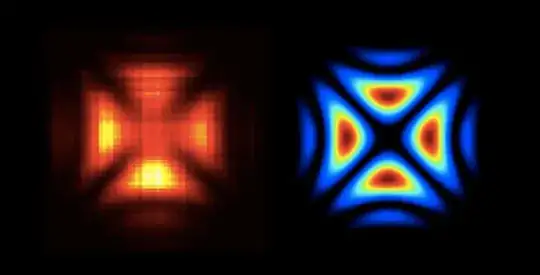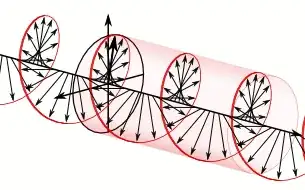At the quantum-mechanical level this article supports Luboš Motl‘s answer above that a single photon—regardless of wavelength and energy—is always circularly polarized either right-handed or left-handed when measured.
The question, which hinges on phase, was marked as answered many years ago, however the debate rages on about what a single photon actually looks like “in flight”, ie. before it’s measured. The paradox is that measurement collapses the wave function. Trying to work around this paradox, Radosław Chrapkiewicz and others published “Hologram of a single photon” in Nature July 2016, pre-publish (free) version here.
The authors begin their paper by acknowledging how challenging it is to retrieve information that characterizes a photon due to the “entirely indeterminate global phase following from the perfect rotational symmetry of their Wigner functions in the phase space.”
They designed an experiment to measure information from 2000+ single photons arriving over time, where each detected photon was one of a two-photon polarization-entangled pair. The accumulated results built a hologram they feel more closely represents that of a single photon:

At the very least, the holographic depiction of a single photon adds to the commonly-seen illustrations of light-also used sometimes to depict a single photon- dating from James Clerk Maxwell’s era and still widely used today, and which some find confusing and counterintuitive:

Even if it works for a superposition of at least two photons, it’s much less clear how it could represent a single photon as it looks more like a standing wave than a traveling wave. To readers wondering how both the electric and magnetic fields of a traveling wave can simultaneously be zero for multiple photons see this question and its responses.
As readers of this question are most interested in single-photon representation, the following helical illustration (or its mirror) is, according to the first-referenced article, a more helpful representation of an individual photon:

Representations of a single photon, if the “always circularly polarized” view is the correct one, reveal that projections on each plane would be more accurately drawn 1/4 wavelength translated from each other:

However, if applied to single photons, all the cartoons imply an infinite length to single photons which is not supported by experiment, reminding us that all illustrations have limitations.
This article claims the debate is over the other way, that experiments prove single photons can absolutely be linearly polarized.
@darkblue accepted a “no” answer nearly 7 years ago, yet it seems more likely that the debate will continue, and hopefully adding new experimental results will help provide balanced context to future-askers of the same question.



